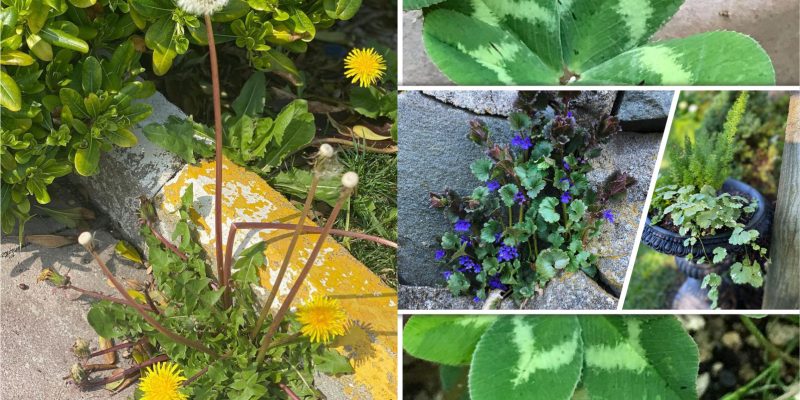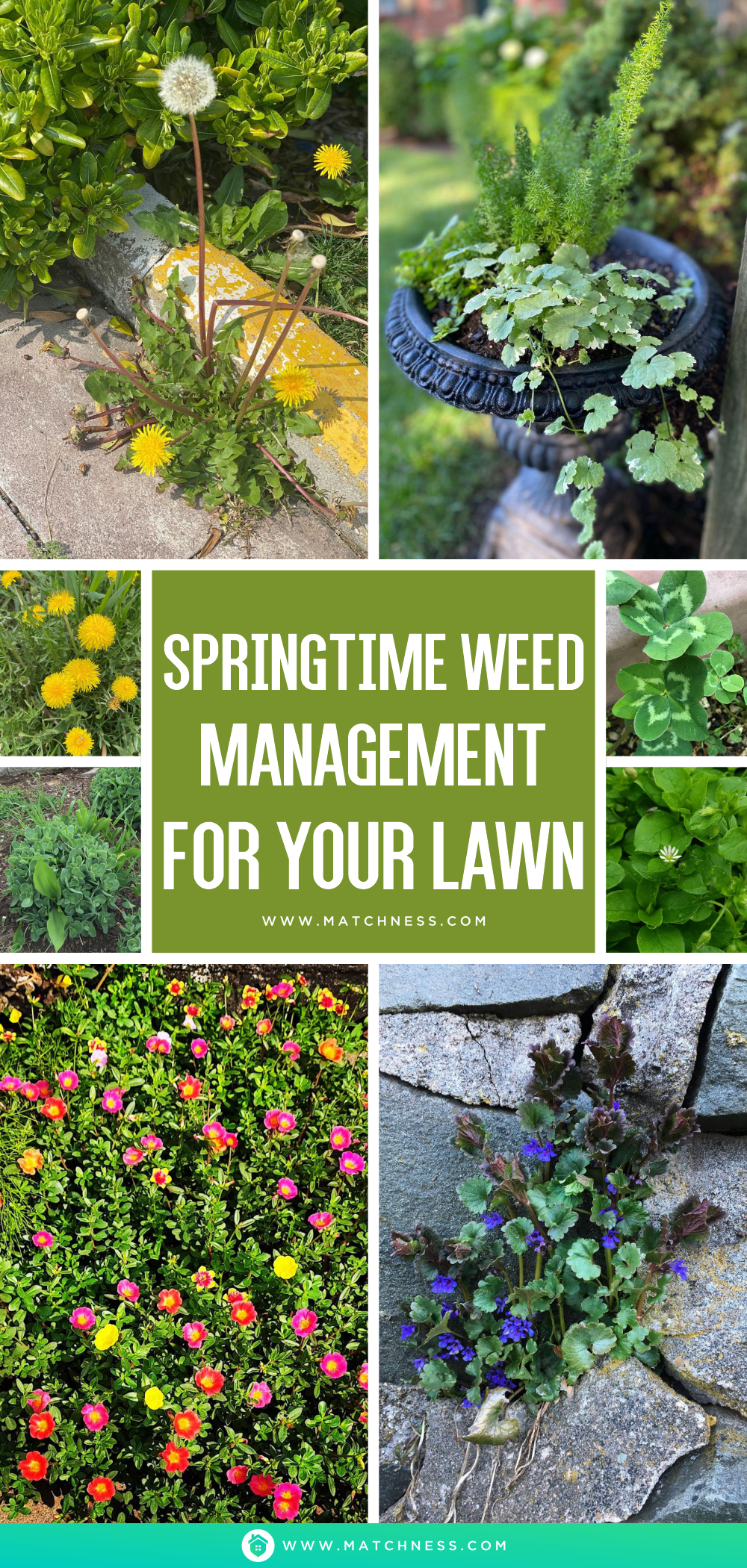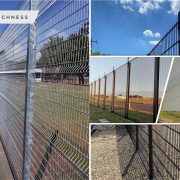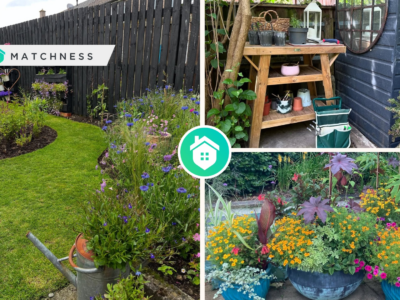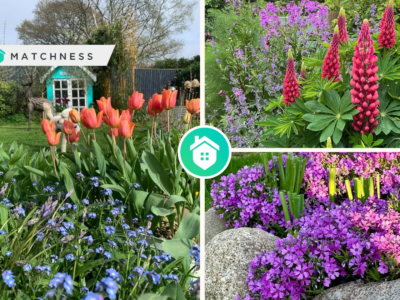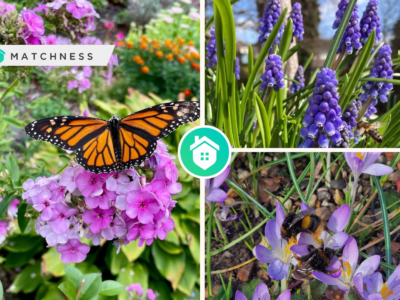Maintaining a weed-free lawn can be a challenging task, especially if you’re committed to having a lush, green lawn that only consists of recognized turf-grass species. It’s not something that can be accomplished with a one-time effort, as new weed seeds are constantly being introduced to your lawn by various means, including wind, birds, lawn equipment, and foot traffic. In fact, some weed seeds can remain dormant in the soil for decades before sprouting and becoming a nuisance.
Don’t give up! Although maintaining a perfect lawn requires year-round attention, taking a proactive approach during the spring can help reduce the amount of time and effort needed to maintain your lawn throughout the summer and fall. By implementing proper lawn care practices and staying vigilant in your weed control efforts, you can enjoy a beautiful and healthy lawn with minimal hassle.
Types of Weed Killers
Herbicides are a commonly used chemical solution for controlling weeds on lawns. These chemicals can be formulated to target specific types of weeds, such as broadleaf weeds like dandelions and chickweed, or grass-like weeds such as crabgrass, quackgrass, and nutgrass. Some herbicides are combination products that can effectively eliminate both types of weeds.
Herbicides can be categorized into two groups: pre-emergent and post-emergent. A pre-emergent herbicide is applied before the weed seed has germinated and the seedling has emerged from the soil. In warm-weather regions, pre-emergent herbicides are typically applied in late fall, while in cold-weather regions, they are applied in early spring before the turf grasses have begun to grow actively. One of the advantages of pre-emergent herbicides is that they can prevent mid- and late-summer weeds, such as plantains, from appearing altogether.
Pre-Emergent: Within the pre-emergent category, certain chemicals like dithiopyr (Dimension) and pendimethalin (Lesco’s Pre-M, Scotts’ Halts) can prevent all types of seeds from germinating, including grass seed. However, it’s important to note that these chemicals can have a residual effect and prevent grass seed from being applied for 6 to 12 weeks, depending on the specific product. Another chemical, siduron (Tupersan), is more selective and only prevents weed seeds from germinating, allowing grass seeds to grow unimpeded. However, this chemical is typically more expensive and should be used judiciously.
Post-Emergent: Post-emergent herbicides are applied after weeds have already started to appear on the lawn. These chemicals need to come into contact with the actively growing leaves of the weeds to be effective. They are usually applied during late spring and summer, when weeds are actively growing. Selective post-emergent herbicides are formulated to kill only certain types of weeds while leaving desirable turf grasses unharmed. Non-selective herbicides, on the other hand, can kill any plant that they come into contact with. Glyphosate is a well-known non-selective herbicide found in products like Round-Up. These herbicides should be used with caution and only spot-treated on individual weeds that resist other methods. Using them extensively on the lawn can kill off all vegetation, ruining the lawn.
Choosing the correct chemical weed killer that targets the particular weeds in your lawn is crucial. Some homeowners avoid using synthetic chemicals on their lawn due to environmental concerns. In such cases, organic herbicides can be used as an alternative, which includes household vinegar or commercial preparations containing a blend of vinegar, salts, and soaps.
Targeted Application is Superior to Widespread Application for Weed Control
Lawn care product manufacturers suggest applying a lot of chemicals over the entire lawn to control weeds, but this approach can harm water sources through run-off. Academic sources, like lawn-science departments, recommend treating weeds using the least toxic method possible and avoiding broad applications of chemicals. Instead, they suggest spot-treating individual weeds with a targeted spray rather than applying chemicals over the entire lawn. Spot-treating weeds may seem like a lot of work, but it becomes easier over time as most of the weeds are killed.
Avoid Weed-and-Feed Products
Academic lawn-science experts disapprove of the use of weed-and-feed products that contain both fertilizer and herbicide. These products are marketed as a time-saving solution, but the optimal time for fertilizing a lawn differs from the optimal time for applying herbicides. If you apply weed-and-feed products at the right time for fertilizing, it is too late for the herbicides to work effectively, and the chemicals can run off into water supplies. Some countries have banned these products entirely. Lawn chemical companies argue that they are safe and effective, but academic experts disagree and advise against using them. It is better to apply fertilizers and herbicides separately at the appropriate times for each.
Non-Chemical Alternatives
Homeowners who prioritize environmentally friendly gardening practices prefer to use organic and non-chemical methods to deal with lawn weeds. Corn gluten meal is the only organic pre-emergent weed control method. It is a feed meal used on hog farms, but it can also prevent crabgrass and other lawn weeds. However, it needs to be applied at the right time, just before weed seeds germinate, which may require multiple applications. If it’s applied too late, it becomes a fertilizer that causes weeds to grow more vigorously.
For post-emergent weed control, there are several home remedies, including spraying weeds with a solution of household vinegar or dish soap. Commercial preparations containing no synthetic chemicals are also available, usually made of vinegar, soaps, and salts. Using a flame torch to kill weeds with pure heat is another option.
The most environmentally friendly method is removing weeds by hand. Gardeners can use helpful tools like the “weed popper,” which allows for weed removal with roots intact from a standing position. Spending an hour once a week pulling weeds after mowing can keep a lawn mostly free of weeds. This is practical even for large lawns.
Springtime Lawn Weeds That Are Frequently Seen
Dealing with common lawn weeds can involve categorizing them based on their leaf shape as either broadleaf weeds or grassy weeds, or by their seasonal growth habit as annual or perennial weeds. The kinds of weeds that you may face depends on the region where you live, as some are more prevalent in warmer regions, while others are only found in colder regions with freezing winters. Below are some examples of common weeds that appear in spring:
Crabgrass (Digitaria spp): Crabgrass is an annual weed that gets its name from its circular, crab-like leaves. It usually grows in weak or bare areas of the lawn and is favored by over- or under-watering and mowing the lawn too short. To get rid of it, you can use pre-emergence herbicides in the spring to stop the seeds from sprouting or post-emergent herbicides to treat the weeds as soon as they appear. It’s best to check with your local extension office or garden center to know the right timing for your region. Alternatively, you can remove crabgrass clumps by hand when the lawn is quite moist.
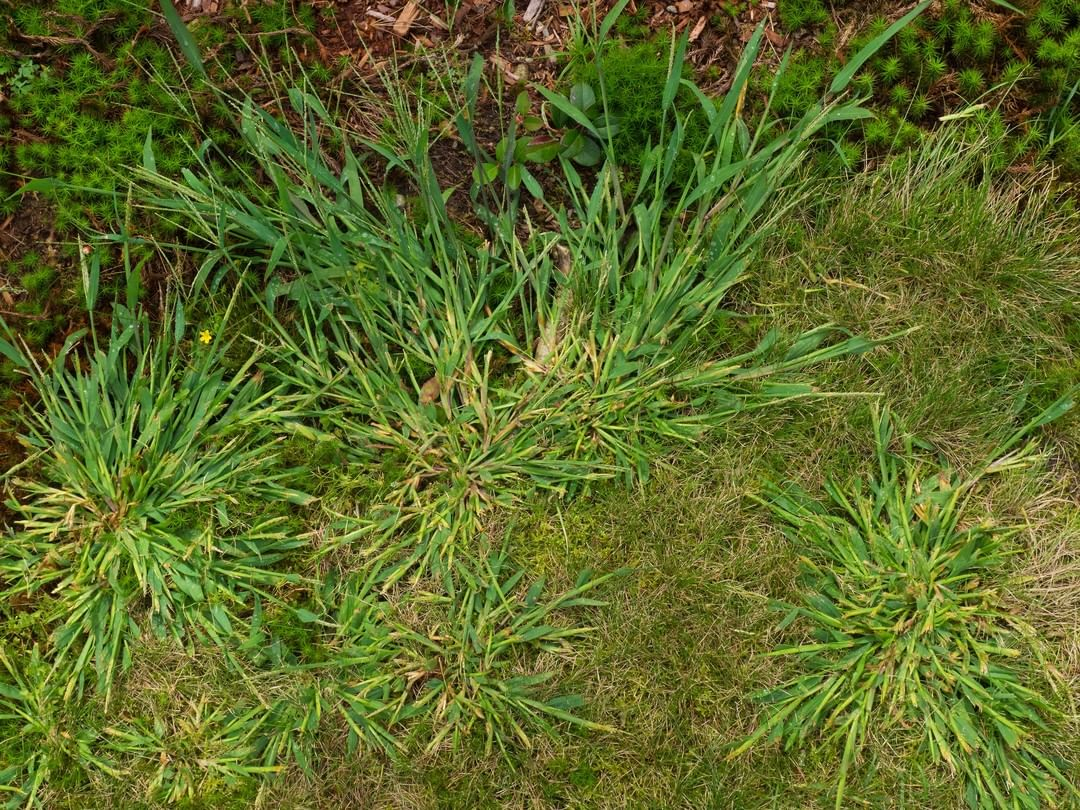
Crabgrass usually grows in areas of weak or bare grass and is favored by over- or under-watering and cutting the grass too short. To clean up this weed you can remove the crabgrass clumps by hand when the lawn is damp enough. Crabgrass from @truevalue
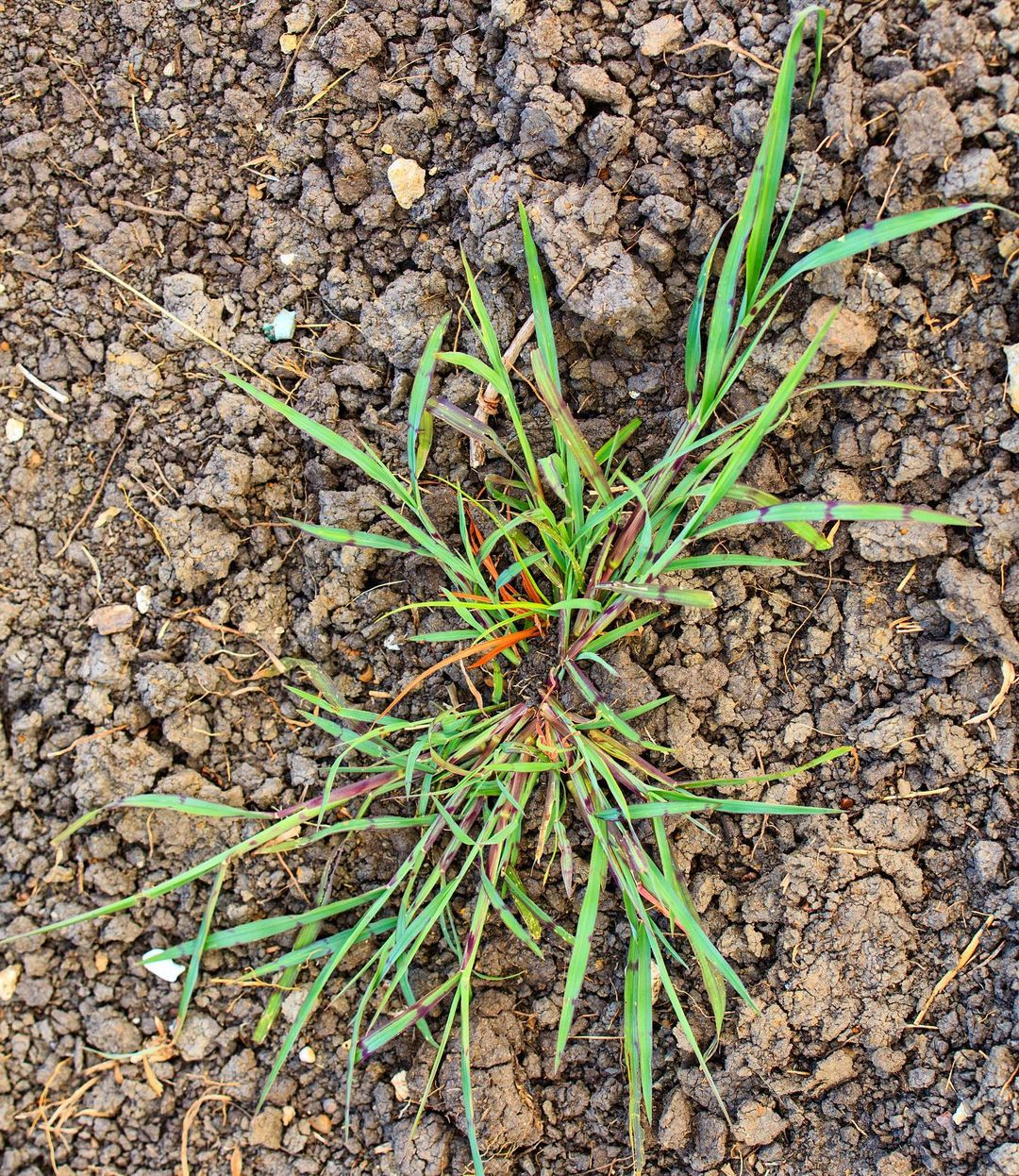
This type of crabgrass weed usually grows in the soil or rocks. To get rid of them, you can use a pre-emergence herbicide in the spring. Lawn Crabgrass from @jonathangreen_lawn
Quackgrass (Elymus repens): Quackgrass looks similar to crabgrass, but it is a different type of weed. It is a cool-season grass that spreads through rhizomes and is a perennial weed. It is difficult to get rid of, and even pre-emergent and post-emergent herbicides can only stunt its growth. The best option is to use a glyphosate-based herbicide that will kill the weed completely, including the roots. Hand removal is not practical due to its strong roots.
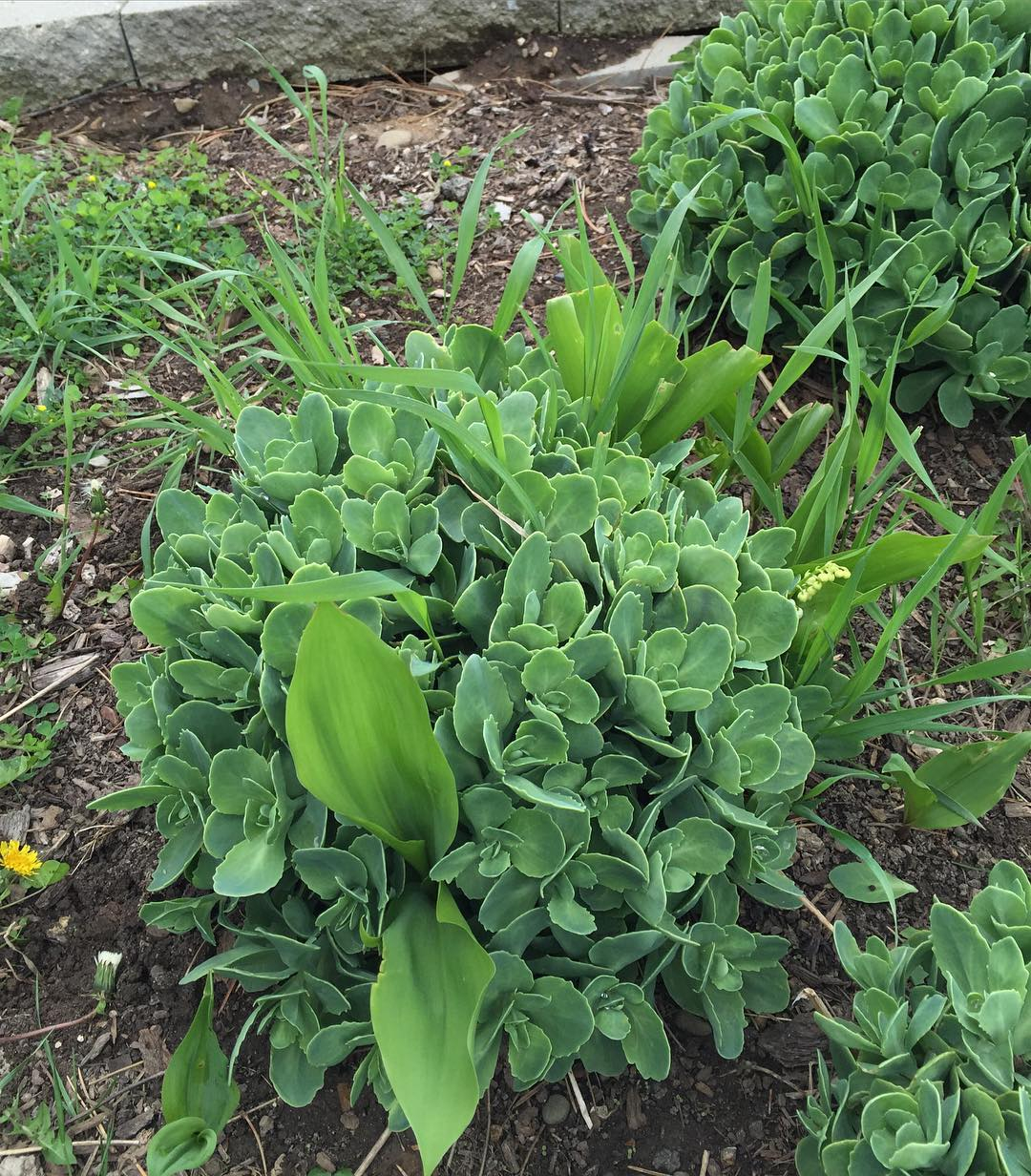
Quackgrass is a cool season grass that spreads via rhizomes and is a perennial weed. To kill this type of weed you can use pre-emergence and post-emergence herbicides that can only inhibit their growth.Quackgrass from @luckybreakacres
Dandelion (Taraxacum spp.): Dandelions are common late spring plants that some homeowners consider a weed while others see them as wildflowers. They can be a problem for those who don’t want them, as a single flower head can produce thousands of seeds that can spread throughout the neighborhood. To prevent dandelions, pre-emergent herbicides can be applied, but it needs to be done thoroughly. If they have already sprouted, post-emergent herbicides or glyphosate-based plant killers can be carefully applied. It is best to get rid of them before they flower and spread their seeds.
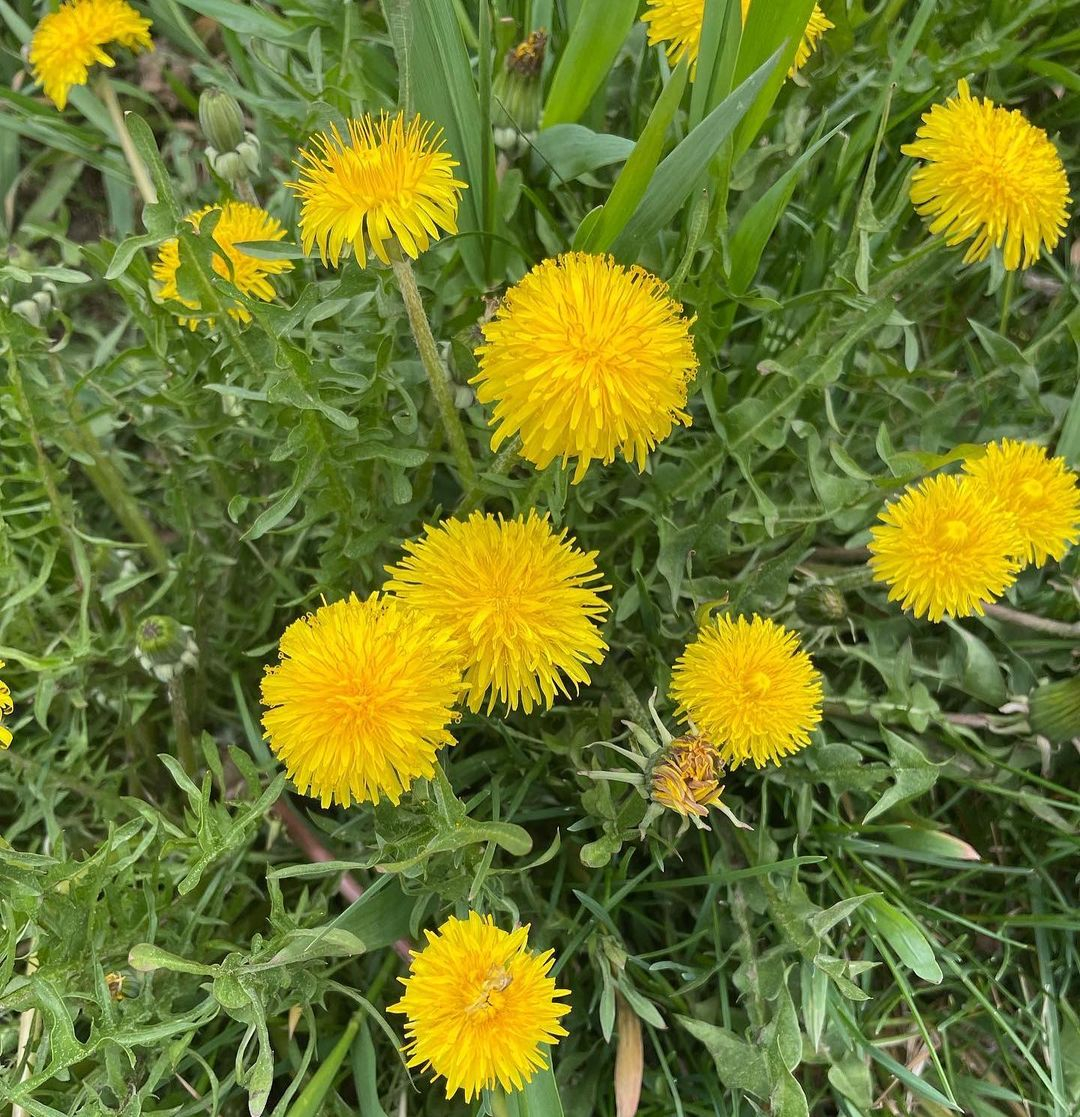
Dandelions are common late spring plants that can thrive in your garden soil. They can be a problem for those who don’t want them, as a single flower can produce thousands of seeds that can be spread throughout the environment. Yellow Dandelion from @rootwingcollective

Dandelions are plants that are in the process of growing. They can pose an issue for individuals who do not want them. Applying post-emergence herbicides or plant killers that are based on glyphosate can be an option, but it should be done carefully. Dandelion Lawn from @urlacookingclass
Creeping Charlie (Glechoma hederacea): Creeping Charlie, also called “ground ivy,” is a creeping plant with small heart-shaped leaves and blue flowers. While some people like it as a ground cover for shady areas, most homeowners consider it a weed. It spreads quickly through self-seeding and creeping stolons and is difficult to remove by hand. A selective herbicide that targets broadleaf weeds is an effective approach. You can apply it as a spot treatment, but it may require multiple applications. In cases of severe infestation, some homeowners choose to kill off the entire lawn with a non-selective herbicide and start over. While organic gardeners seek natural ways to combat Creeping Charlie, these methods have not proven to be effective in the long run.
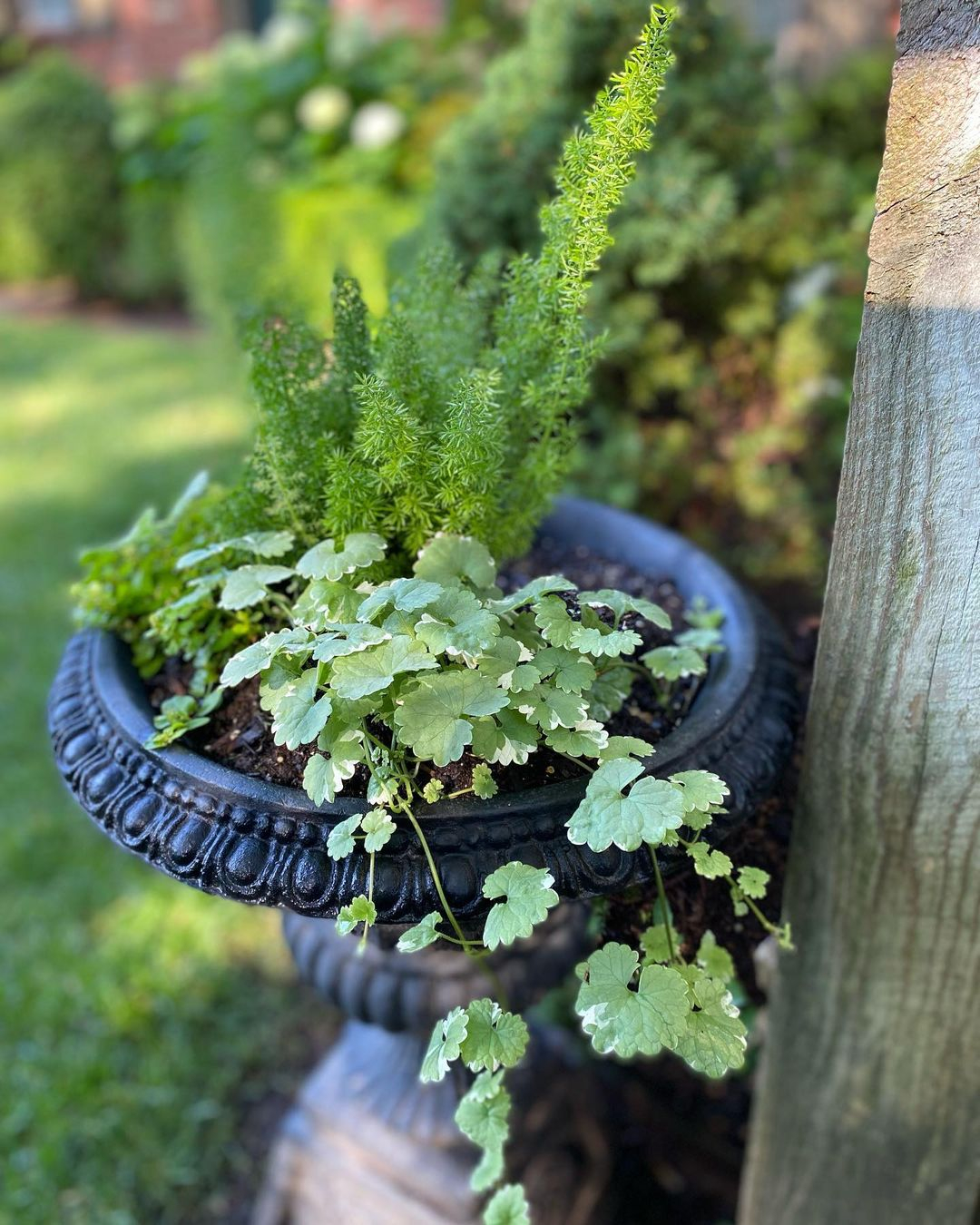
Creeping Charlie is a common weed that can invade your garden. Although spot treatment with herbicides can be effective, it may require multiple applications. Alternatively, to completely eradicate this weed, you can use a non-selective herbicide and start fresh with your garden. Creeping Charlie Lawn from @bethbteel
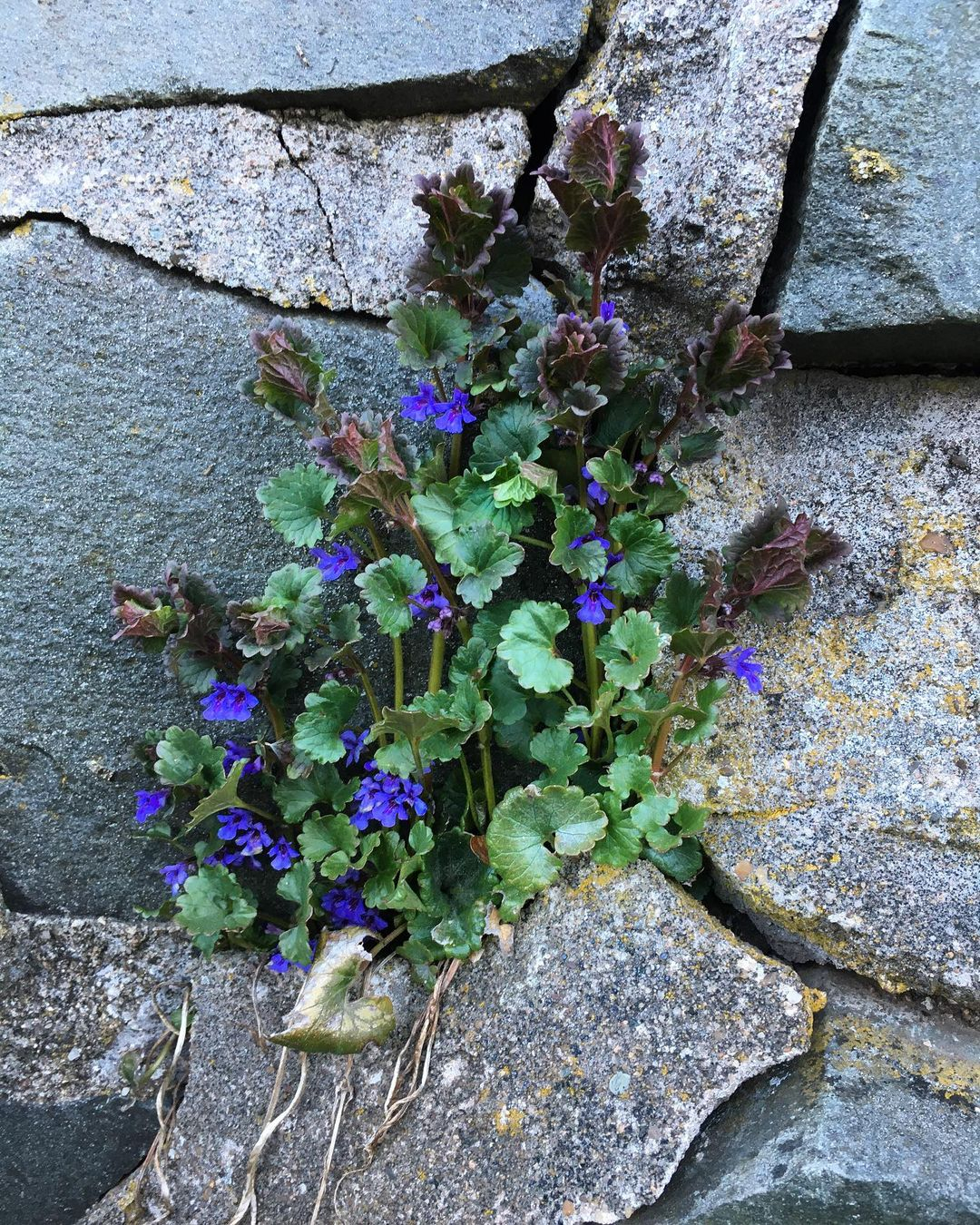
The growth of creeping Charlie on garden rocks can be problematic, as it has a tendency to spread quickly through self-seeding and creeping stolons. Removal by hand can be difficult and ineffective. Rock Creeping Charlie from @eastcoastwildfoods
Wild Violets (Viola spp.) : Wild violets are a plant that some gardeners choose to encourage as a ground-cover, but others may see it as a weed. If you want to get rid of them, a spot treatment of broadleaf herbicide is best, especially in the fall. If they appear in the spring, treat them as you spot them. Wild violets can also be removed by hand if the soil is moist. Some people use dish soap to coat the leaves as it may be helpful in getting rid of them.
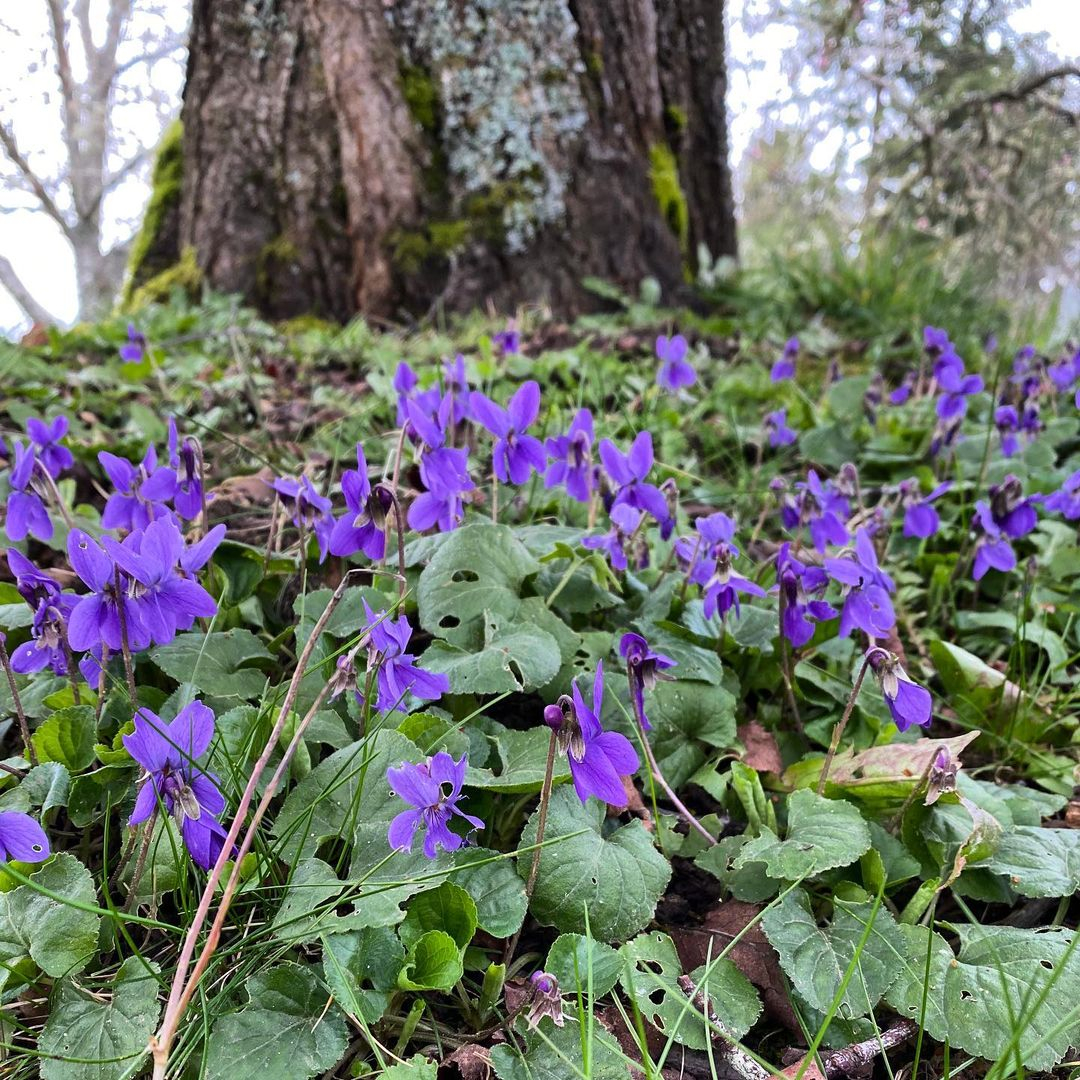
Wild violets can be considered a desirable ground-cover by some gardeners, while others view them as weeds. If you wish to eliminate them, it’s recommended to use a broadleaf herbicide for spot treatment, particularly during the autumn season. Wild Violets from @thedillydahliasisters
Chickweed (stellaria media): The chickweed is an annual weed that is prevalent throughout the United States. It has small egg-shaped leaves and white flowers and grows as low-lying vine-like stems. For severe infestations, pre-emergent herbicides can be applied in the fall. For plants that appear in the spring, a spot treatment with a post-emergent broadleaf herbicide is effective. Another effective method is to spray the weed with white vinegar, which can be easily found in most households. To prevent the plant from flowering and producing seeds, it’s important to keep the lawn mowed short.
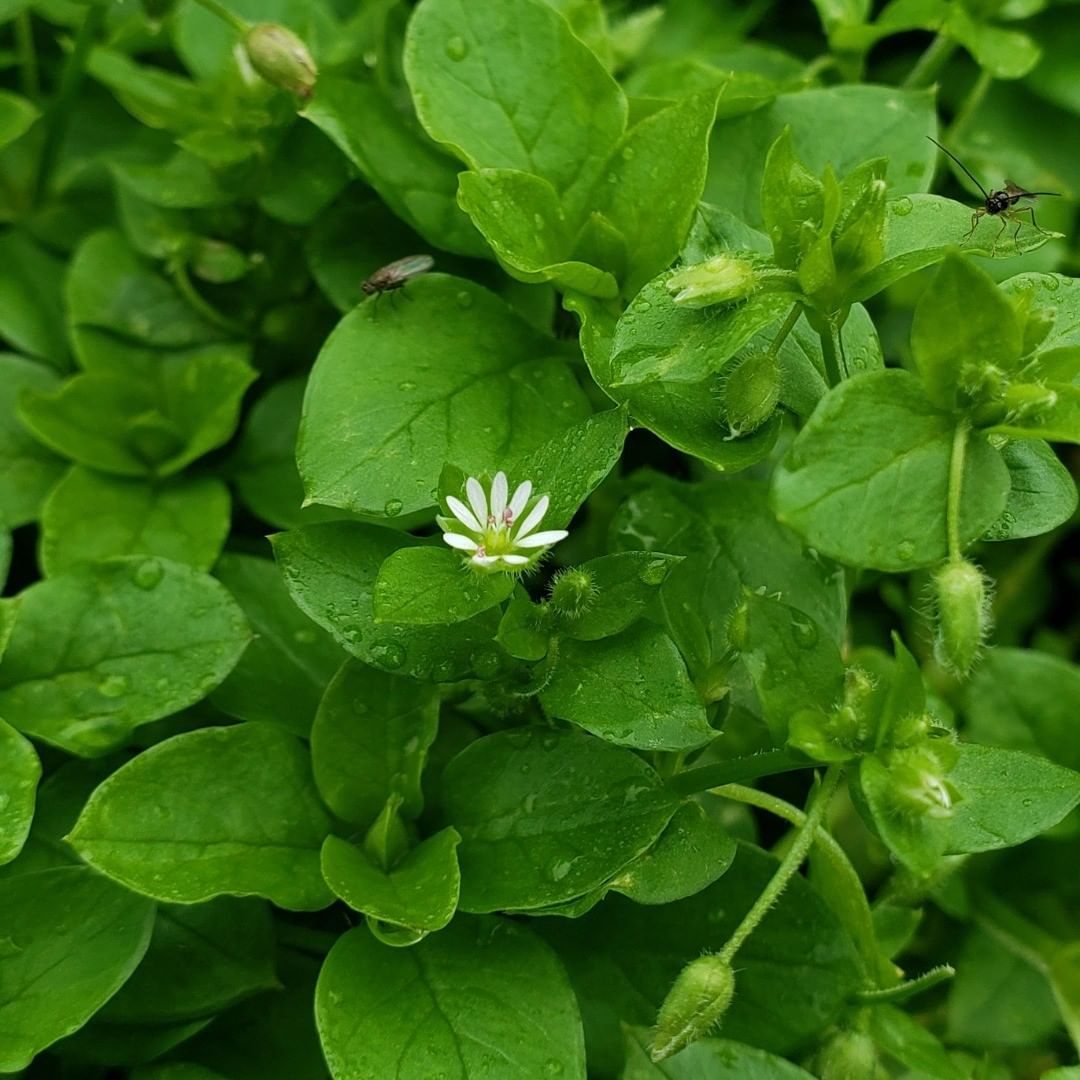
Chickweed is a low-growing weed with small, egg-shaped leaves and white flowers that spreads through vine-like stems. One way to control it is by using a simple household item like white vinegar as a spray. Chickweed from @rosaleedelaforet
Purslane (Portulaca oleracea): This annual weed grows in low, mat-like formations with reddish stems and oval-shaped, fleshy leaves. It becomes a bigger problem during the humid and hot days of later summer, but it may appear as early plants in spring. You can easily prevent it by using a granular pre-emergent herbicide and kill it by spot-treating with a post-emergent broadleaf herbicide. You can also break off the plant at ground level to stop it from flowering and producing seeds. Purslane is a very nutritious plant that can be consumed raw in salads or cooked as a side dish. However, if you use herbicides in the area, you should not consume it.
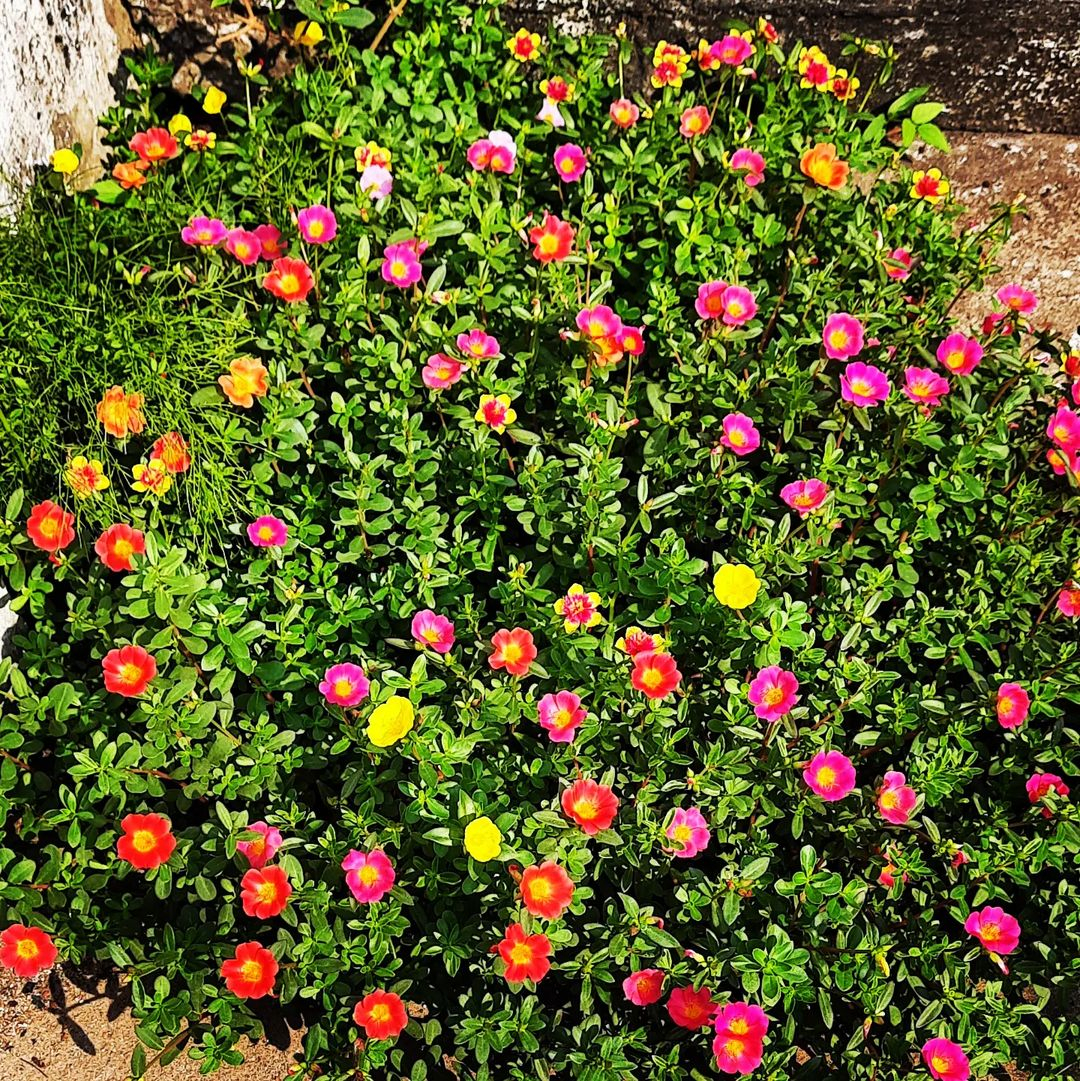
This annual weed may appear as early plants in spring, and it can be prevented by using a granular pre-emergent herbicide. If it has already grown, you can use a post-emergent broadleaf herbicide to spot-treat and eliminate it. Purslane from @dr.anumurali
Clover: White clover has had a varied reputation over time. At one point, it was intentionally added to lawn seed mixes, but later it was considered a weed and removed from lawns. Today, it is becoming popular again for several reasons. Clover is a good ground cover that doesn’t require a lot of moisture and attracts pollinators like bees. Clover lawns need less mowing and provide nitrogen to the soil, so they require less fertilizer. Some homeowners are even adding clover to their lawns intentionally. Before removing it, seek advice from a local university extension service. If you do decide to remove it, use a post-emergent herbicide applied directly to areas where the clover grows.
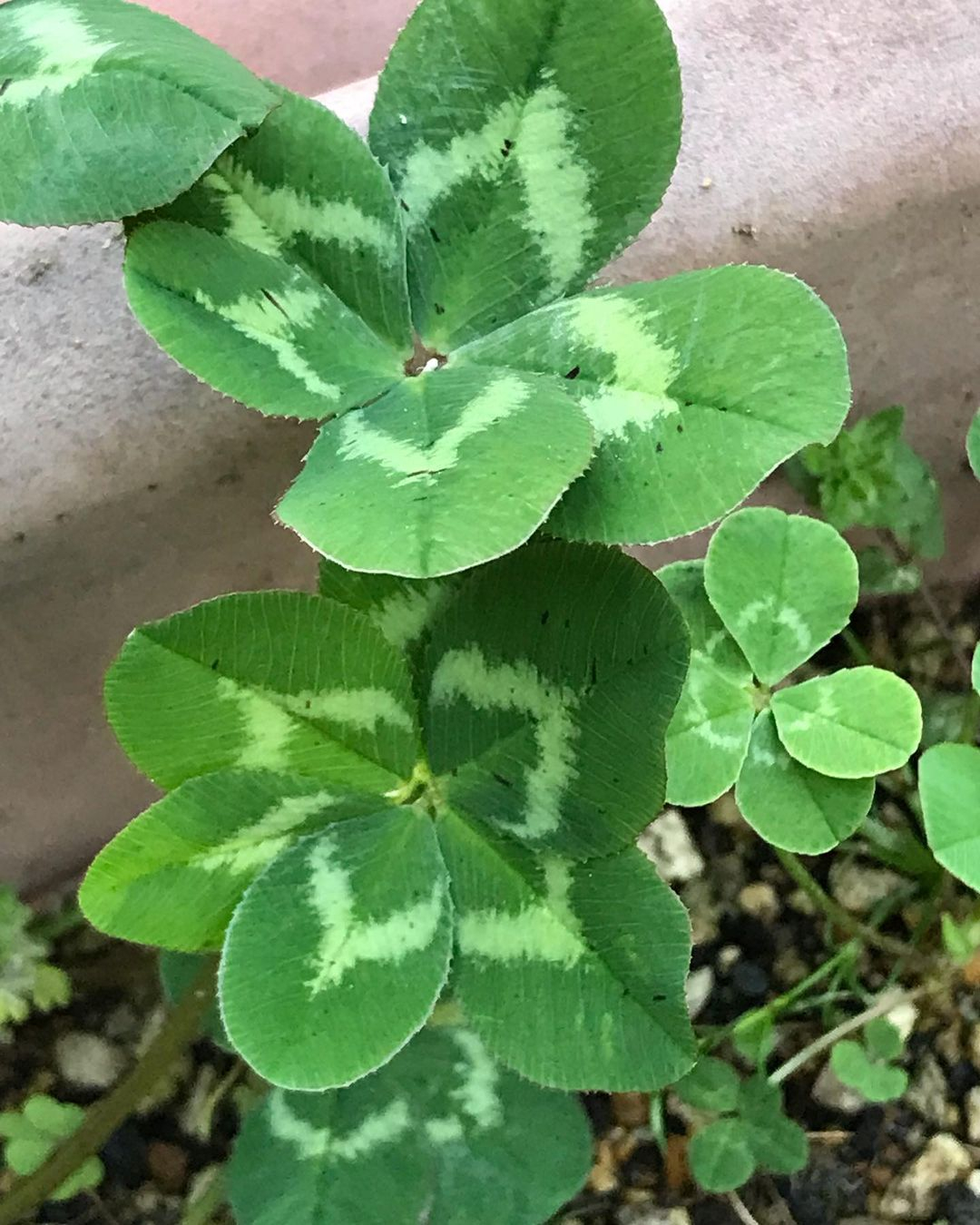
Clover is a great groundcover that doesn’t need a lot of moisture and attracts pollinators like bees. Some homeowners even deliberately add clover leaves in their yard because they can become weeds that can complement the look of the garden. Clover from @968suzuki


